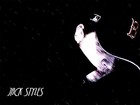
Creative Commons license

Simple and yet resounding folk tunes with subtle themes of peace and understanding.
Philosophy in its simplest form. Influence doesn't happen with guns blazing, but instead with a smile and a tune. My goal is not only to express myself with music, but also to connect with people while performing it. By the way, if you choose to hear any of my songs, be kind and drop a line at the message board with comments (good or bad).
Song Info
Track Files
Lyrics